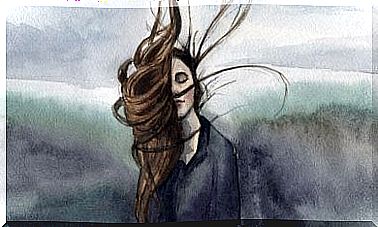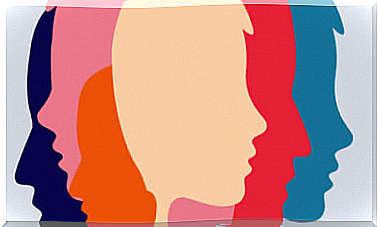“Don’t Cry ” Is NOT The Correct Response To A Crying Child
Usually, when we want to allay the anguish of a child who has fallen or is getting angry, we use sentences like: “don’t cry”, “you have to be brave”, “men don’t cry. not ”,“ do you think crying will make things better? ” , etc.
Have we taken the time to think about the consequences of these sentences? We don’t just say NO to driving, we also say NO to the child and their emotions. We teach them to suppress them instead of expressing them and this undoubtedly has serious repercussions on their development and that of society.
There is nothing strange about us educating children in this way because we are reproducing the educational message that we have received, for the vast majority of us. That’s why, in this sense, the same thing happens when we use these phrases for adults: why not cry if something hurts us? Tears are a natural mechanism that must be used.
If we want our children to understand their emotions and be able to experience them, we need to remove certain phrases from our speeches and habits that can serve as examples. This is, without a doubt, contrary to our habit of blocking out thoughts, emotions and behaviors.
– Let them go, Lucie, said the grandmother.
– Who ?
– The tears ! Sometimes you think there are so many that they will end up choking you, but they don’t.
– Do you think that one day they will stop flowing?
– Sure ! exclaimed the grandmother with a smile full of tenderness. Tears never stay long in one place, they do their job and keep going.
– And what do they do for work?
– Tears are water, Lucie! They clean, they rinse … Like the rain. Everything is different after the rain has passed.
-Extract from The Rain Knows Why (La lluvia sabe por qué) by Maria Fernanda Heredia
When we feed children with love, fears starve
They must be helped to identify the causes of their crying and to channel their emotions, by promoting their capacity for regulation. This last point is important because, normally, their crying is provoked by an embarrassment which breaks their peace.
Fortunately, nature is wise and has struggled against the dominant educational model to allow sadness to be the most empathetic emotion. Our minds and brains have a special predisposition to deal with sadness, to empathize with it, and to provide comfort to those in front of us when we feel in this state.
It appears that years of upbringing with the incorrect model have made us suppress negative but healthy emotions, only to socially and individually validate the quieter version of ourselves.
We need to teach children that sadness has many causes, that it is a natural response to something that bothers us and that can be channeled. We must offer adequate models of self-regulation and foster the capacity for reflection that ill-being offers us.
When we tell them to suppress their emotions with phrases like “don’t cry”, we promote a confrontation based on fear and negation of the message that crying offers. But just because it’s a disturbing and negative emotion doesn’t mean it’s bad.
So, in addition to trying to understand, we have an obligation to help them relieve this emotion and get out of this circle. On this point, we must pay attention to the degree of embarrassment of crying and, for this, we must face an expectation and a firm educational rule: do not allow excess anger.
Regarding this point, it should be noted that in children, especially between 2 and 6 years old, anger is frequent and especially important. Facing it puts us face to face with a perspective that we cannot underestimate, taking into account its evolutionary moment with its needs and its strengths.
In these cases we can go mad, but it is essential and important that our words convey the message of “yes to feelings and yes to the child, no to misbehavior”. Be careful, we can validate emotions and feelings by placing ourselves at the same level of understanding as the child and by promoting introspection.
We know that emotions are not revealed exclusively but are extremely complex. For example, we need to gradually teach them that being sad is not incompatible with being angry or ashamed. They will integrate this idea little by little as they grow and develop their thoughts.
To conclude, we can say that, regardless of where the tears come from, favoring the analysis of the child and putting words into the origin of his discomfort will allow better regulation as well as better reflexivity to a time when his thoughts are completely messy and “don’t respond” adequately.
Illustrations of
Recommended Reading: Discipline Without Tears Of









